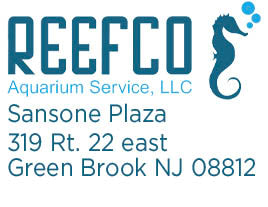What Is An Aquarium Protein Skimmer?
When it comes to keeping your saltwater aquarium healthy, a protein skimmer is an essential component of your filtration system.
It removes waste and other harmful organic compounds, ensuring that your aquarium remains clean and healthy for your fish and other marine life. In this comprehensive guide, we will examine the different types of protein skimmers, how they work, and why they are so important for your aquarium.
Why Is Oxygenation Important for Aquariums?
Oxygenation is a critical aspect of maintaining a healthy saltwater aquarium. Fish and other marine life require oxygen to survive, and without adequate oxygenation, your aquarium can quickly become unhealthy. Protein skimmers can help to increase oxygenation in your aquarium by creating a frothy mixture of air and water. This mixture not only helps to remove organic compounds but, also increases the amount of oxygen in the water.
In addition to protein skimmers, there are other ways to increase oxygenation in your aquarium, such as using air stones or powerheads. These devices can help to create surface agitation, which increases the amount of oxygen that is dissolved in the water.
However, protein skimmers are often the most effective way to increase oxygenation, as they also remove harmful organic compounds at the same time.
How do protein skimmers remove waste inside aquariums?
Protein skimmers are designed to remove organic compounds that can accumulate in your aquarium over time. These compounds can come from fish waste, uneaten food, and other sources, and if left unchecked, they can cause a variety of problems in your aquarium, including water discoloration, algae growth, and unhealthy living conditions for your fish and corals.
The way that protein skimmers remove these compounds is by using a process called foam fractionation. This process involves creating a frothy mixture of air and water, which is then used to extract the organic compounds from the water.
How Does a Protein Skimmer Work?
Protein skimmers work by creating a frothy mixture of air and water, which is then used to remove organic compounds from the water. The process works by drawing water from the aquarium into a chamber where the air and water are mixed together.
As the mixture rises to the top of the chamber, a foam is created, which traps the organic compounds. The foam then overflows into a collection cup or chamber, where it is removed from the aquarium.
There are several different types of protein skimmers, including co-current, counter-current, and venturi-style skimmers. Each type works in a slightly different way, but the basic principles are the same. The goal of each type of skimmer is to create a frothy mixture of air and water that can remove organic compounds from the water.
Types of Aquarium Protein Skimmers
There are several different types of protein skimmers available on the market, each with its own unique features and benefits.
Some of the most common types include co-current, counter-current, and venturi-style skimmers. Let's take a closer look at each type and how they work.
Co-Current Protein Skimming In Aquariums
Co-current protein skimmers, also known as single-pass skimmers, are one of the most common types of protein skimmers. They work by drawing water from the aquarium into a chamber where it is mixed with air.
The mixture then rises to the top of the chamber. The organic compounds are then trapped in the foam. The foam then overspills into a collection cup, so it can be removed from the aquarium.
Co-current protein skimmers are often less expensive than other types of skimmers and are relatively easy to install and maintain. However, they may not be as efficient as other types of skimmers, and they may require more frequent cleaning.
Counter-Current Skimming in Aquariums
Counter-current protein skimmers, also known as double-pass skimmers, are another popular type of protein skimmer. They work the same as co-current skimmers, drawing the aquarium water into a chamber where it is combined with air.
The mixture then rises to the top of the chamber, where the foam is collected in a second chamber. The foam is then drawn back into the first chamber, where it is mixed with fresh water and air. The process is repeated several times, with each pass removing more organic compounds from the water.
Counter-current protein skimmers are often more efficient than co-current skimmers and require less frequent cleaning. However, they are also more expensive and can be more challenging to install and maintain.
If you need help to install your protein skimmer, speak to the Reefco Aquarium Team - we have trained technicians who are experienced in all aspects of installation processes.
Venturi-Style Skimming in Aquariums
Venturi-style protein skimmers work by using a venturi valve to mix air and water. The valve creates a vacuum that draws air into the water, creating a frothy mixture.
The mixture then rises to the top of the chamber, where the organic compounds are trapped in the foam. The foam then spills into a collection cup, where it is removed from the aquarium.
Venturi-style protein skimmers are also less expensive than co-current skimmers. They are also fairly easy to install and perform simple maintenance. However, venturi-style protein skimmers are not as efficient as co-current skimmers, and they may require more frequent cleaning.
Conclusion
A protein skimmer is an essential component of any saltwater aquarium. It helps to remove organic compounds from the water, ensuring that your aquarium remains clean and healthy for your fish and other marine life.
There are a few different types of protein skimmers available, each with its own unique features and benefits. Whether you choose a co-current, counter-current, or venturi-style skimmer, you can rest assured that your aquarium will be a healthy and thriving environment for your fish and other marine life. To learn more about protein skimmers contact the Reefco Aquariums Team today.



